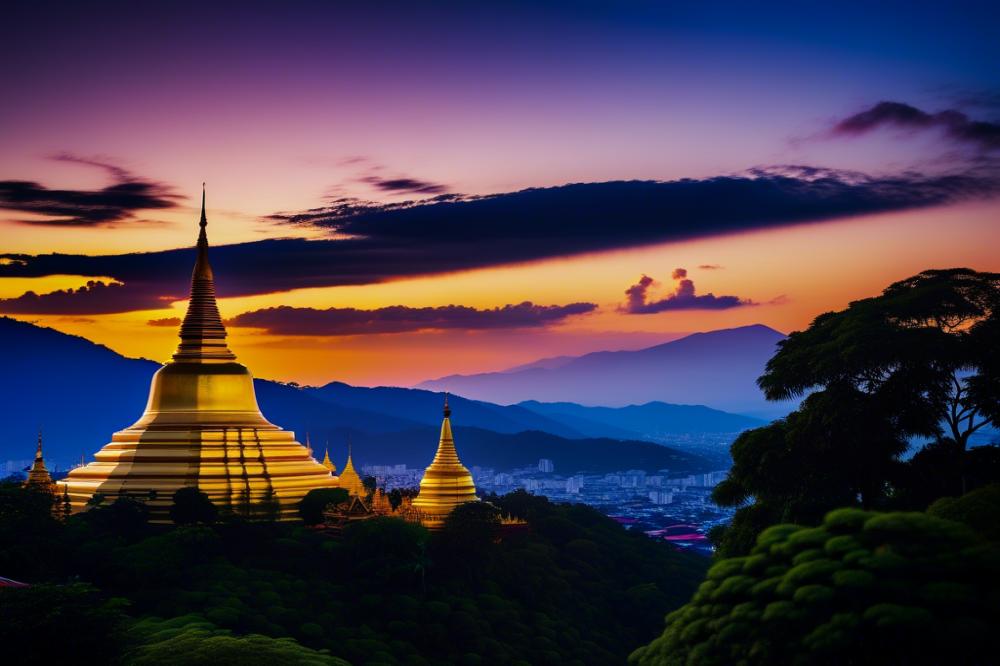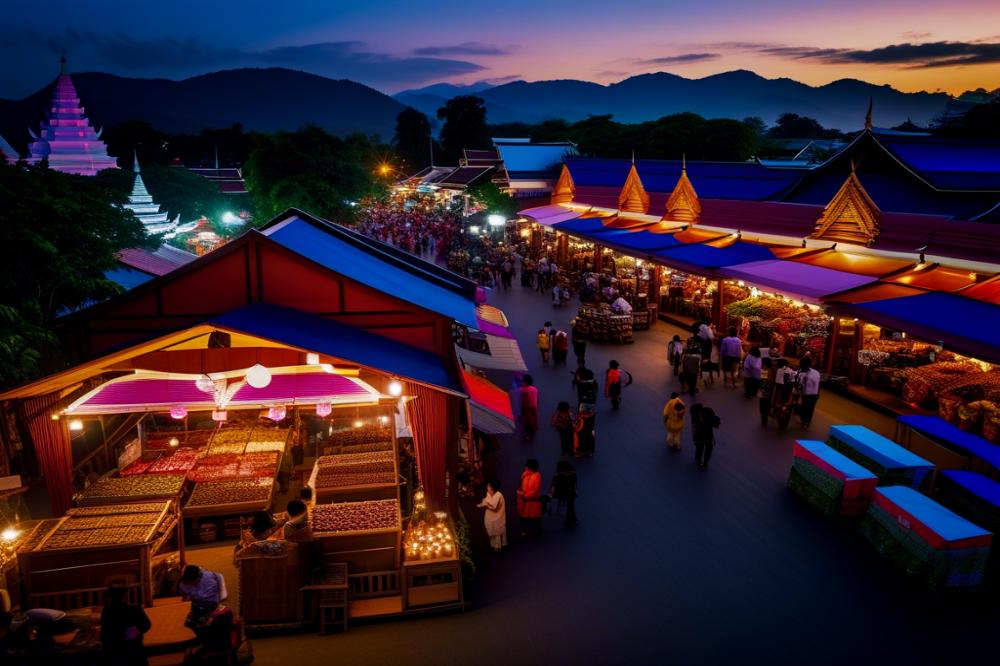A Guide to Phuket’s Cultural and Historical Landmarks
Overview of Phuket as a Popular Tourist Destination
Phuket is a vibrant island known for its stunning beaches and lively nightlife. Every year, millions of visitors flock to this tropical paradise. However, there is much more to this destination than just sun and sand. Travelers can explore a wealth of cultural and historical landmarks that provide insights into the island’s rich heritage.
Importance of Cultural and Historical Landmarks
Understanding the cultural heritage of Phuket is crucial for appreciating its history. The island has a deep-rooted past shaped by various influences. historical sites help paint a picture of its unique story. They offer a window into the lives of people who have inhabited the land for centuries. Discovering these places includes visits to Buddhist temples and traditional Chinese shrines. Sites like the famous Wat Chalong and the iconic Big Buddha stand as testaments to the island’s spiritual traditions.
Diverse Influences: Thai, Chinese, and Portuguese
Phuket’s culture is a melting pot shaped by Thai, Chinese, and Portuguese influences. The architecture in Old Phuket Town showcases the beautiful Sino-Portuguese style, blending Eastern and Western elements. Additionally, vibrant local festivals reflect the harmonious coexistence of these cultures. The Thalang National Museum provides context for these interactions through its exhibits. Engaging in cultural tours allows visitors to experience the island’s diverse heritage firsthand. Each landmark tells a story, revealing how Phuket became the unique destination it is today.
Phuket landmarks

Landmarks serve as essential markers of a region’s history and culture. In Phuket, many significant sites reflect the diverse influences that have shaped the island over the years. These locations are not just tourist attractions; they hold stories that connect past generations to the present. Visitors often seek out these places for their historical significance and cultural richness.
When we consider the hierarchy of these landmarks, some stand out more than others. historical sites like Wat Chalong rank highly due to their spiritual importance to the local community. This Buddhist temple is a centerpiece for many local festivals, showcasing traditional practices and beliefs. Nearby, the Big Buddha impressively towers over the landscape. Its gigantic presence symbolizes peace and serves as a beacon for those in search of tranquility.
Old Phuket Town represents another layer of the island’s past, highlighting its unique Sino-Portuguese architecture. Walking through its streets, one can admire the colorful buildings that tell stories of trade and cultural exchanges. Chinese shrines dot the area, further emphasizing the influence of Chinese settlers in Phuket’s history. Each structure has its own story, contributing to the rich tapestry of the island’s identity.
Thalang National Museum offers a comprehensive look into the local history and the events that have shaped Phuket. Displays here provide insights into the island’s past, featuring artifacts that connect visitors to the early days of settlement, trade, and cultural development. Alongside these educational experiences, cultural tours can help deepen understanding of the customs and traditions that thrive today.
Phuket’s landmarks not only attract tourists but also foster a sense of pride among locals. Embracing cultural heritage is vital for the community. The continued appreciation of these sites encourages preservation efforts. Ensuring that these locations remain intact for future generations is essential. By exploring these notable places, visitors can gain a richer understanding of Phuket’s diverse culture and history.
Exploring Key Historical Sites

Wat Chalong: The Most Important Buddhist Temple on the Island
Wat Chalong is a must-visit for anyone exploring Phuket’s historical sites. This Buddhist temple holds great significance for the local people. Founded in the early 19th century, it houses statues of revered monks who played important roles in the region’s history. Visitors often admire its intricate architecture and beautifully decorated halls. Temples like this one are central to practicing Buddhism in Thailand. The peaceful atmosphere invites reflection, making it a perfect spot for those interested in spirituality.
The Great Buddha: An Iconic Symbol and Its Cultural Significance
The Big Buddha stands proudly on Nakkerd Hill, visible from miles away. This impressive statue is 45 meters tall and made of white marble, making it a striking sight. The monument is a symbol of hope and peace for many visitors and residents. Those who make the trek to its base can enjoy panoramic views of Phuket. Surrounding the statue are smaller shrines and stunning views that highlight local beliefs. Many tourists take this opportunity to learn about the significance of the statue in Thai culture.
Old Phuket Town: Heart of Sino-Portuguese Architecture and Rich History
Old Phuket Town offers a glimpse into the island’s diverse heritage. The streets are lined with well-preserved buildings showcasing Sino-Portuguese architecture. Colorful houses and charming shops invite explorers to take a leisurely stroll. In addition, numerous Chinese shrines can be found throughout the area, each telling a story of the past. Local festivals celebrate the rich culture and traditions of Phuket’s community. An afternoon spent here is like stepping back in time.
Thalang National Museum: Insights into Phuket’s Past and Local Customs
Thalang National Museum provides fascinating insights into the history of the island and its people. Exhibits feature artifacts dating back to Phuket’s early inhabitants. The museum also showcases local customs and traditions. Visitors can learn about the significance of the region’s historical events through multimedia presentations. From ancient times to modern culture, this museum offers educational experiences for all ages. Engaging displays captivate those who are curious about Phuket’s rich historical narrative.
Cultural Heritage and Architecture

Sino-Portuguese Architecture: Characteristics and Impact on Local Culture
Sino-Portuguese architecture is a striking blend of Chinese and European influences. This distinctive style features colorful facades, large windows, and intricate details. Often found in Old Phuket Town, these buildings tell a story of the island’s rich history. They showcase the blending of cultures that occurred when Chinese immigrants settled in Phuket during the tin mining boom. The impact is evident in local design, influencing everything from the homes to shops. Visitors often admire the vibrant streets, which reflect a fusion of past and present.
Influence of Chinese Shrines on Phuket’s Cultural Landscape
Chinese shrines are important landmarks on the island. These sacred spaces represent a harmonious blend of religion and culture. Many are dedicated to deities like Toh Allah, the patron of strength and protection. Such shrines not only serve spiritual needs but also foster community ties. They play a significant role in festivals, attracting both locals and tourists. The architecture of these shrines, with colorful decorations and intricate carvings, adds to Phuket’s cultural identity.
Unique Local Festivals that Highlight the Island’s Traditions
Phuket hosts several vibrant local festivals throughout the year. The Vegetarian Festival is notable, showcasing the island’s cultural heritage and spiritual beliefs. This event features parades, traditional ceremonies, and various food options. Another important celebration is the old-style Chinese New Year, filled with dragon dances and fireworks. Participants honor ancestors, emphasizing the value of family and tradition. Such festivals provide a glimpse into the island’s customs and traditions, inviting everyone to join in the festivities. Cultural tours often involve visits to these events, enriching the experience for all involved.
Experiences and Cultural Tours
Guided tours around Phuket’s cultural and historical landmarks offer an enriching experience. Many visitors choose to explore sites such as Wat Chalong and the Big Buddha. These locations are not just tourist spots; they are essential parts of the local culture. Tour guides often share stories that bring the history to life. Knowledge about traditions enhances the visit, making it more meaningful.
Engaging with local communities provides a deeper understanding of their customs. Observing local festivals can be eye-opening. These events showcase traditional music, dance, and rituals that reflect Phuket’s heritage. Visiting Chinese shrines allows travelers to appreciate the blend of different cultures on the island. Interacting with residents fosters appreciation for their way of life.
Recommendations for Cultural Exploration
For anyone eager to learn, city tours focused on Sino-Portuguese architecture are highly recommended. Strolling through Old Phuket Town reveals colorful buildings that have stood for generations. Moreover, the Thalang National Museum presents fascinating exhibits that outline the island’s history. Engaging with locals during these tours can deepen one’s appreciation of the site’s significance. Each interaction allows travelers to see beyond the surface.
Consider joining cultural tours that involve visiting Buddhist temples. Such tours often include meditative practices or rituals guided by experienced monks. Participating in these activities can be transformative. The tranquility found at these sites contrasts with the lively atmosphere of local markets. Through a blend of exploration and interaction, the essence of Phuket’s heritage unfolds.
Before embarking on tours, travelers should research the offerings available. There are many experiences tailored to various interests. Food tours highlight local cuisine and include stops at hidden gems only known to residents. Art and craft workshops provide opportunities to learn skills from local artisans. Each option promises to enrich the visitor’s understanding of Phuket’s vibrant culture.
Final Thoughts: Embracing Phuket’s Rich Heritage
Phuket boasts a remarkable array of cultural and historical landmarks. Visitors to the island can witness the fusion of influences that shape its identity. From grand temples to quaint museums, each site tells a part of the island’s story. Wat Chalong stands as a shining example of Buddhist architecture, drawing countless visitors intrigued by its beauty and significance. Historical sites like this provide a glimpse into the spiritual and cultural life of the locals.
Tourists are encouraged to wander beyond the beaches and resorts. Exploring the local history helps gain a deeper appreciation of Phuket’s roots. Authentic experiences await those willing to engage with the island’s past. Art galleries and traditional markets offer insights into local customs and crafts. Engaging with local guides can also enrich one’s understanding of each landmark.
Preserving and celebrating Phuket’s heritage is vital for future generations. As visitors enjoy the sites, they also play a role in maintaining these treasures. Respecting local customs and supporting community initiatives will ensure the culture thrives. The deeper we dive into these aspects during our holidays, the more meaningful our experiences become. Let’s foster a love for this vibrant history, ensuring that it remains alive and accessible for many years to come.



